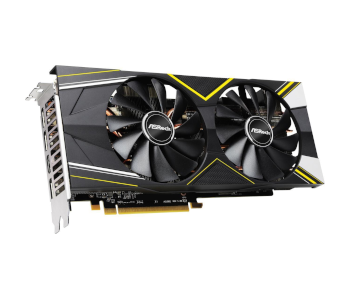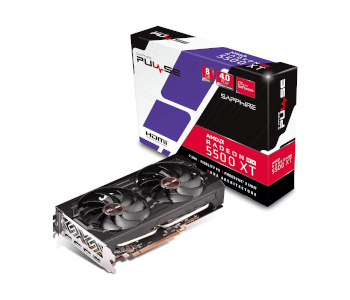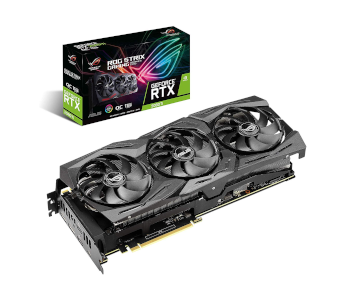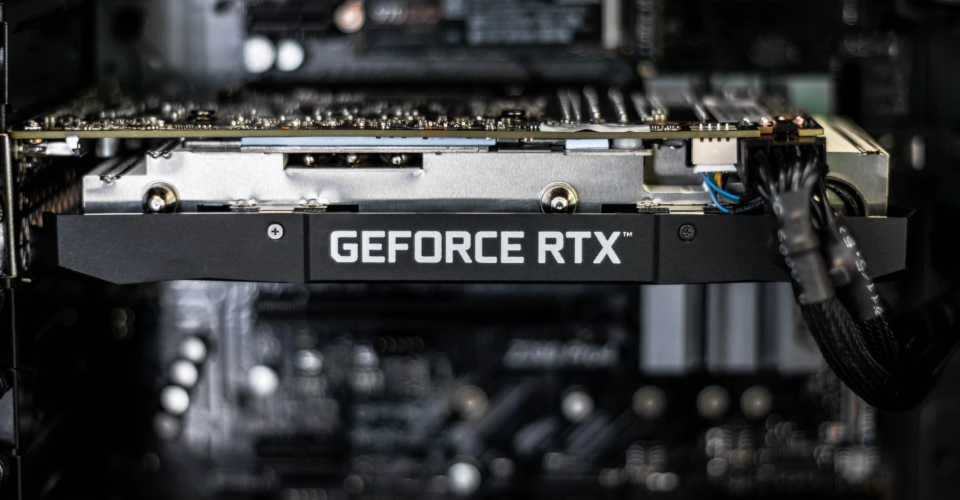How to Choose A Graphics Card: Ultimate Guide
The industry of PC gaming is built on the concept of DIY gaming rigs. By mixing and matching different PC components, you can build a desktop with exactly the specs that you need. What’s the point of playing the latest games if you don’t get to enjoy them at the best resolution and framerate?
One of the most important components of a gaming PC is a good graphics card or GPU. The market for gaming GPUs has become very competitive in recent years, giving rise to almost endless options. What should a gamer be looking for in buying a graphics card? Let us help you with this guide.
On the issue of budget and fluctuating prices
Before we even delve in the specs you should be looking for in a graphics card, it’s worth the time to look into how the prices of graphics card can fluctuate very quickly. This is also the point where you ask yourself how much you’re willing to pay.
While there are graphics cards that go for as low as $100, these are bottom-tier models and are probably only good enough for casual gaming. High-end models can for as high as $1200. If you’re looking for a mid-range graphics card that can play most of today’s popular games at high settings, you’re looking at spending anywhere between $300 to $1000.
It also doesn’t help how the market for graphics cards makes these products very vulnerable to price fluctuations. The boom in popularity of crypto mining made graphics cards more appealing to more than just gamers, resulting in an increase in prices to all-time high numbers.
Although prices have stabilized a bit since then, it’s still not uncommon to see a particular model change its prices by up to $50 in a single day. To make sure that you’re getting a good deal, check the manufacturer’s standard retail price (MSRP) of the model first before adding it to your cart. Unless you’re in a hurry to start gaming, it may be worth a couple of days of waiting just to get a good deal.
AMD or NVIDIA?

Although Intel has expressed an intention to enter the graphics card market in 2020, AMD and NVIDIA have managed to make such indelible marks on the market that they probably won’t be knocked off the top spots for years to come. With hundreds of different graphics cards between them, these two brands have the widest selection of graphics card options and probably have something to offer that fits your budget and needs.
Is one brand better than the other? Not necessarily, unless you’ve developed some form of brand loyalty. If the brand is no issue, then what you should be looking for is the price-to-performance ratio of individual graphics cards. If you can chance upon a sale for the graphics card that offers your requirements, then there really is no reason to discriminate against either of the two brands.
To clear any confusion, the graphics cards are manufactured by AMD or NVIDIA but are licensed to other companies who then sell them. This is the reason why brands like ASUS, MSI, or Gigabyte sell graphics cards made by NVIDIA and MSI. Again, it really doesn’t matter from which reseller you buy your graphics card – all that matters is that you get it a good price. Some of these brands may offer discounts more frequently than the others, but there’s still no reason to lean on one particular reseller over the others.
How do the specs affect a graphics card’s performance?
Making sense of all the numbers in any PC component can be overwhelming, and the same can be said for graphics cards. To make sure that you know exactly what you’re buying, here are the specs to consider and how each one affects how well the graphics card will perform.
Memory

Much like your computer’s CPU, your graphics card is responsible for handling a huge number of calculations per second. A dedicated graphics card will have its own memory for handling these calculations, all of which go into the number of graphical details that it can render. As a rule of thumb, a graphics card with a higher memory should be able to render more details, although this can still depend on other factors such as its clock speed and number of cores, among others.
For gaming at 1080p resolution, we suggest getting a graphics card with 3 to 4 GB of dedicated memory. Of course, you have the option of getting more memory if you prefer playing at the highest graphics settings. For 4K gaming, you’ll need at least 8 GB of memory.
Thermal Design Power (TDP)
The TDP is a figure that appears in both CPUs and graphics cards and refers to the amount of power consumed by a device under stock settings. Take note that this is not the maximum power that a device can dissipate, as it’s possible to run applications on overclocked settings. When choosing a graphics card, make sure that its TDP and the TDP of your CPU matches the capacity of your CPU’s power supply.
Clock speed
The clock speed of a graphics card, also known as the engine clock, is a measure of how fast its cores are. A graphics card with a higher clock speed can generally render graphics faster, resulting in an improvement in framerate.
Although the relationship between framerate and clock speed is ideally linear, other factors also come into play, such as the architecture of the graphics card. Most models are also designed with an overclock capacity, which can give a small but palpable increase in framerate. However, it’s a good idea to select a graphics card that you will use on its stock settings
Power connectors
Aside from ensuring that your power supply can provide the needed power for both your graphics card and CPU, you’ll also need to take note of your graphics card’s power connectors. Most graphics cards will come with a 6-pin PCIe connector which can support up to 75W of power. More power-intensive cards will have an 8-pin PCIe connector which is designed for up to 150W.
Most high-end graphics cards will have a combination of 6-pin and 8-pin connectors or two 8-pin connectors. Just make sure that your power supply can accommodate thee connectors of your graphics card. Otherwise, you may need to get a couple of adapters.
Bandwidth
The memory bandwidth of a graphics card, expressed in GB per second, is a measure of the speed of the video RAM. Much like the clock speed, the bandwidth of a video card influences how fast it can render details. As a general rule, a graphics card with higher bandwidth can render at a higher framerate. Again, this may not be a direct rule as other factors come into play.
Choosing a graphics card based on its specs alone is a poor practice because a gaming PC represents an ecosystem of interacting components. This means that you’ll need to make your selection based on the context of a specific use case, considering the games you want to play and your other hardware.
Compatibility with games

All this talk of memory and clock speed is moot if you can’t play the games you want on your gaming rig. The logic is pretty simple: if you want to play a more graphics-intensive game, then you’re going to need a more powerful graphics card.
If you want to play simple games like Minecraft or League of Legends, then you can probably make do with a low-end or mid-range graphics cards. However, more demanding games like Red Dead Redemption 2, Assassin’s Creed Odyssey, or The Witcher 3 will really shine with something in the higher end of the spectrum.
If you want to play VR games on the Oculus Rift or HTC Vive headsets, most mid-range cards will probably be fine. This is mostly because the framerates of these VR games are capped to what the headsets can support. Of course, there’s nothing wrong with going for a graphics card that is more powerful than what is required.
If there are specific games you’re eyeing, simply head over the game’s Steam page or the developer’s recommended specs. Some gamers take the route of future-proofing their rigs by going for graphics cards that have specs beyond what their favorite games call for.
Compatibility with monitor
There are two factors about your monitor that you will need to take note of: its support resolution and refresh rate. You will want to get a graphics card that matches these numbers.
The resolution of your monitor is simply a measure of the number of pixels that it renders on each frame. The higher the resolution, the more detailed its output. Naturally, high-resolution video output is more demanding of the graphics card.
Most gaming monitors nowadays output at 1080p, although the industry has started the transition to 4K. If you can get a graphics card that supports 4K and is within your budget, then it’s probably a good idea to get it now in anticipation of upgrading your monitor to 4K resolution. 4K will likely be the new standard for gaming and all other video output for the next couple of years.
The refresh rate of a monitor is simply a measure of how many frames it can render per second. At higher refresh rates, games and movies look smoother. For games that require a quick response, this increased refresh rate can make the difference between a win and a loss. As expected, a higher refresh rate also requires a more powerful graphics card.
Ideally, you would want a monitor and graphics card pair that support each other’s specs. If your budget allows it, then it’s a great idea to get a graphics card that is capable of a higher resolution and refresh rate than what your monitor supports. Graphics cards evolve much faster than monitors, so you can probably upgrade that monitor eventually to maximize your graphics card’s capabilities.
Compatibility with power supply and CPU case

When checking for your CPU’s compatibility with your desired graphics card, there are three factors to consider: the power supply, the connectors, and the physical clearance allowed by your CPU case. We’ll go over these one by one.
The first thing to check is if your power supply can provide the wattage needed by your graphics card. This can be done by simply checking the graphics card’s minimum recommended wattage and comparing it to the power supply’s wattage. However, this paints an incomplete picture of the system because the PSU supplies power to more than just the graphics card.
A more prudent measure would be to look at the power supply +12V rail rating. The +12V rail is where the graphics card will be directly drawing its power. This is a more certain way of ensuring that your graphics card will not end up crippling your whole system.
We’ve already touched on power connectors at the section above, so let’s just go over this briefly. Basically, more power-intensive graphics cards will have 8-pin PCIe connectors, with high-end models even having two of them. These are clearly indicated for each graphics card, so just make sure that your power supply has the matching connectors.
Lastly, you will want to make sure that your new graphics card will physically fit inside your CPU case. This can be problematic for cases that are intentionally designed to be slim or low-profile. Fortunately, this is pretty easy to check.
Simply check the length of the graphics card you’re eyeing based on its specs and measure the clearance of your CPU’s graphics card slot from the edge of the case. Some cases also list this graphics card clearance as part of its specs. A few centimeters of allowance would be ideal.
Avoiding bottlenecks
When building a gaming PC, it’s good to keep in mind that the performance of the rig depends on all of its components – not just the graphics card alone. As with any process that relies on several components, the system is only as good as its weakest part.
This phenomenon, called ‘bottlenecking’, can happen when the specs of your graphics card exceed that of your CPU or power supply by a great margin. This results in the graphics card not attaining its full capabilities, simply because the processor or power supply cannot keep up.
Thus, when choosing the components of your gaming PC, it would be best to look at the system as a whole. Don’t blow too much of your budget on your graphics card. Make sure that you also get a CPU with a similar level of specs and that your power supply can support your component’s optimal output. This principle extends to all other components in your gaming rig, including the RAM, storage, cooling system, and motherboard.
Final thoughts
The beauty of PC gaming is that it can be an infinitely customizable experience. With thousands of options for PC components out there, you can build a gaming rig that’s unique to your needs and the games you want to play.
The graphics card is one of the most important parts of a gaming PC. Despite that fact, we can’t downplay how every component also plays an instrumental role in the system as a whole. More than how powerful your graphics card is, balance is the key to getting the most out of your gaming PC hardware.

